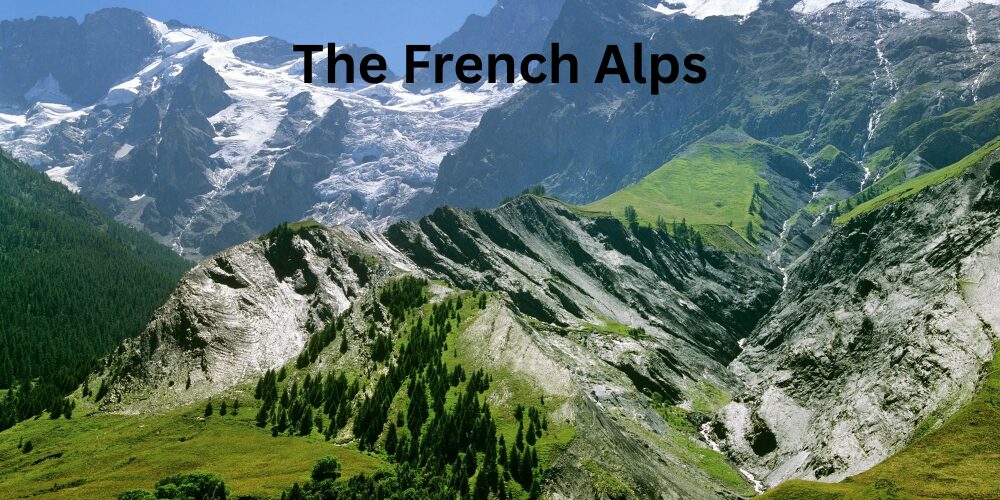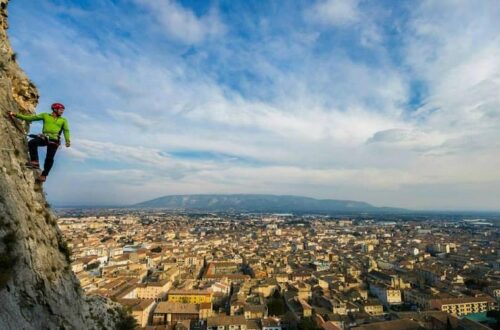Via Ferrata du Roc du Vent: An awe-inspiring Journey Through the Alps
High above the sparkling blue waters of Lac de Roselend, in the Beaufortain Massif of the French Alps, lies one of France’s greatest via ferrata routes: the Via Ferrata du Roc du Vent. Perched on a jagged ridge at nearly 2,400 meters, this route has dramatic alpine landscapes, adrenaline-pumping features, and historical intrigue that few others can match. For lovers of high mountain adventure, the Roc du Vent delivers a complete and unforgettable day in nature.

Overview and Setting
The Via Ferrata du Roc du Vent is in the Savoie region of southeastern France, near the town of Beaufort, which is famous for its namesake cheese. This via ferrata traverses the slopes of the Roc du Vent, a limestone peak rising above the shimmering Roselend Dam (Barrage de Roselend). The route traces a rugged path across ridges, faces, and narrow ledges, with expansive views of Mont Blanc, the Pierra Menta, and surrounding alpine peaks dominating the horizon.
The name Roc du Vent means “Windy Rock,” a fitting title given the high-altitude location and the ridge’s exposure to weather. But it’s not just wind that makes this route memorable—it’s the variety of terrain and the dramatic natural features that make it feel like a multi-act alpine theater.
Click here to read about another fantastic Via Ferrata adventure in France.
Route Description
The via ferrata is moderate in difficulty (rated D), suitable for those with good fitness and some via ferrata or climbing experience. Spanning roughly 700 meters in length with 300 meters of vertical gain, the route takes around 3 to 4 hours to complete, depending on pace and group size.
The adventure begins with a scenic hike from Plan de la Lai or the Refuge de Plan Mya, where the gravel trail leads hikers gently upward through alpine pastures toward the base of the via ferrata. Along the way, wildflowers, marmots, and grazing cows set a tranquil tone—but this calm quickly gives way to exhilaration as you approach the rock face.
Click here for a tremendous selection of European adventures.
Key Highlights:
- A Natural Tunnel Through the Mountain: One of the best features of the Roc du Vent route is a natural rock tunnel that passes through the mountain. About halfway through the climb, adventurers are led into a dark, cavernous tunnel—once part of a military fortification. It’s a surreal experience: removing your helmet, walking with a headlamp or flashlight, and emerging on the other side into the bright mountain air, directly onto a high ridge. The tunnel offers a cool contrast to the sunbaked rock and adds a touch of history and mystery to the route.
- A Knife-Edge Ridge Traverse: After exiting the tunnel, the route continues along the narrow and exposed summit ridge of the Roc du Vent. This is the best part of the route, with sheer drops on either side and panoramic views that stretch from Mont Blanc in the north to the Vanoise Massif in the south. The ridge is fully equipped with cables and foot pegs, but the exposure can be intimidating, especially in windy conditions. Still, for confident climbers, it’s a moment of pure alpine euphoria.
- Suspension Bridges and Vertical Walls: The route has several iron ladders, vertical rock sections, and a short cable bridge to add spice to the journey. While they’re not are overly technical, they do require careful footwork and a solid grip on the safety cable. The gear is well-maintained and secure, and climbers are rewarded with uninterrupted views at nearly every step.

Safety and Equipment
As with all via ferratas, safety is paramount. The Via Ferrata du Roc du Vent requires proper via ferrata gear, including:
- A helmet to protect from falling debris or head bumps in the tunnel
- A harness and a certified via ferrata lanyard with energy-absorbing technology
- Gloves are recommended for gripping the metal rungs and cables
- Sturdy hiking or approach shoes with good grip
Though its not too technical, you should not underestimate the route due to its altitude, exposure, and variable weather. Always check the forecast and avoid the route during thunderstorms. They can be dangerous in such exposed alpine terrain.
Getting There
The Roc du Vent is accessible from Albertville, which is connected to the French rail network and national roads. From there, a scenic drive leads to Beaufort and then toward the Roselend Dam. Parking is available at Plan de la Lai, and the approach hike to the via ferrata takes about 45 minutes.
This area is also a great base for hiking, cycling, and cheese tasting, with multiple refuges and chalets offering accommodation. The Refuge de la Croix du Bonhomme and Refuge du Plan Mya are popular overnight spots for those exploring the area as part of a multi-day trekking route like the Tour du Beaufortain.
Click here for a great selection of stylish, practical and outdoors appropriate menswear.
Historical and Cultural Appeal
One of the often-overlooked aspects of the Roc du Vent is its military history. During the early 20th century, the French military built several fortifications in this region, anticipating future conflicts with Italy. The tunnel that climbers pass through is part of this legacy. It adds a historical layer to the experience—blending human ingenuity with natural grandeur.
Beyond its military past, the Beaufortain is deeply tied to agriculture, especially the production of Beaufort cheese, a beloved Alpine product made from cow’s milk. After a day on the rock, visitors can enjoy tastings at local cooperatives and farms.
If you want to lose weight before attempting Via Ferratas, click here.
Why It’s One of the Best
What truly sets the Via Ferrata du Roc du Vent apart is all the different experiences packed into a single route. Few via ferratas offer this blend of ridge-line climbing, natural tunnels, vertical faces, and alpine immersion. You’re never far from a world-class view. The combination of challenge and scenery makes it a favorite among seasoned climbers and adventurous travelers alike.
It’s a route that demands respect but gives back tenfold in reward. It is a place where adventure meets beauty, and where the wind whispers through the rocks to those willing to rise and listen.
Click here to read about a once in a lifetime European adventure spanning five countries.
Tips for Visitors:
- Best Time to Go: Late June to early October. Snow and ice can linger into early summer at higher elevations.
- Ideal For: Intermediate climbers, adventurous hikers, mountain lovers.
- Avoid: Windy or stormy days—exposure on the ridge can be dangerous in bad weather.
- Combine With: A visit to Lac de Roselend, a hike to Pierra Menta, or a night at a local refuge.
Whether you’re a seasoned via ferrata enthusiast or a hiker looking for your next big thrill, the Via Ferrata du Roc du Vent deserves a spot on your adventure bucket list.

